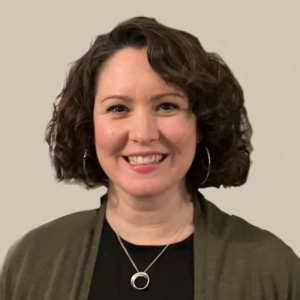The growing movement for learner-centered ecosystems calls for a new paradigm in public education: a modern, community-connected system where local assets are leveraged and learning is optimized, personalized, experiential, and relevant so that every student can thrive. Though the language used in our movement borrows from ecology (i.e. ecosystems, environments, climate, place-based, vibrant, health), the largest and most critical ecosystem of all—our planet—is often absent from our discussions. While I’m certainly not a climate scientist—my focus is systemic, equity-centered social and emotional learning—I do know that without centering climate health, our vision for a reimagined education system that meets the needs of the future won’t succeed. Everyone knows that there are larger geopolitical forces at play that will determine the course of humanity’s battle with climate change, but our evolving education sector can and must take radical action. To do so will involve shifting our collective mindset, gathering collaborators, and changing what and how we teach and learn.
Still an Inconvenient (and Increasingly Urgent) Truth
As former US Vice President Al Gore began begging us to understand in the 1980s, climate change is the issue of our lives. At the time of writing this article, the world just experienced its hottest day on record—the year to date and the last decade are the hottest in modern history. This human-caused warming—primarily created by greenhouse gas emissions beginning during the Industrial Revolution and exponentially increasing over the past century—is an existential threat to all life on Earth. We’re already experiencing the widespread impacts of climate change in the form of catastrophic floods, droughts, heat waves, wildfires, poor air quality, more intense and frequent hurricanes and tornadoes, among many other events.
As sea levels rise, invasive species and disease-carrying pathogens proliferate, and food shortages accelerate, all leading to health crises and further global instability, we must intentionally create a more resilient and sustainable education system that is proactively planning for our current and future climate-related challenges. I know it is easy to become overwhelmed by the magnitude of the problem (it made me hyperventilate to write and research sources for the previous paragraph), but we put on blinders at our peril.
Climate Justice as a Guiding Principle
Our movement for a learner-centered paradigm has placed equity at its center, and yet for that claim to hold up, we must recognize the disproportionate impact of climate change on the health of People of the Global Majority (PGM), lower-income, and other vulnerable students and communities. A recent report by the US Environmental Protection Agency on the effects of climate change on children’s health and well-being presents a social vulnerability analysis using variables such as age, race, ethnicity, poverty status, access to health insurance, and whether English is a child’s first language. Across almost every climate-related hazard or stressor, younger, poorer, PGM children, who speak English as a second language fare worse than their wealthier, white counterparts.
There is a powerful climate justice movement sweeping the world led by young people, whose justified rage was memorably articulated by renowned climate activist Greta Thurnburg in a 2019 address to the United Nations climate action summit: “I should be back in school on the other side of the ocean… Yet you all come to us young people for hope. How dare you! You have stolen my dreams and my childhood with your empty words.”
Climate leaders in Indigenous communities have long advocated for being in harmony with our environment, versus its exploitation. We must fortify our movement by leveraging the knowledge and fierce urgency of climate justice activists already leading the way.
An Ecological Solutions Model For an Ecological Problem
Obviously, there are no easy answers to how to make the shift to make climate resilience the foundation of our movement’s efforts, but in keeping with our ecosystem ethos, the following nested model provides some starter considerations to combat the overwhelm.

Build a Resilience Mindset
As noted, trying to transform our education system without contextualizing the inescapable impacts of climate change is like trying to renovate a house while the roof is on fire—it’s a fool’s errand. Every other aspect of successful innovation rests on building climate change into our plans—no one is coming to save us (well, maybe our Gen Z and Alpha students), but we cannot give in to despair, denial, or apathy. We must embrace a goal of not only surviving but thriving, and that means accepting the facts and not viewing climate change as “off-topic” or only one of many issues in our movement.
To start on that path, each community can develop a locally relevant decision-making framework that keeps them honest about what will contribute to the well-being of students, educators, families, communities at large, and our planet. My friend and collaborator, Meena Srinivasan, beautifully communicates the concept of “interbeing,” a term coined by her teacher, Thich Nhat Hanh. Interbeing refers to the interdependence among all living beings and elements of nature, helping us understand that our own resilience is inextricably connected to that of all people and the Earth. To adopt such a mindset, we might ask questions like:
- How can climate resilience become a lodestar for our efforts to reimagine education? What knowledge-building might our community need to make this shift and embrace our collective power to reject denial or despair?
- As we build learner-centered ecosystems, are our choices contributing to or divesting from extractive, unsustainable practices that harm our students and the planet?
- Whose voices and experiences are we centering as we collaborate to build a new education paradigm? Are voices with a passion for climate justice and sustainability at the forefront?
We must intentionally create a more resilient and sustainable education system that is proactively planning for our current and future climate-related challenges.
PAMELA MCVEAGH-LALLY
Gather Systemic Collaborators
It is a profound understatement to say our education infrastructure, transportation, and food systems are inadequate to handle the near and long-term climate emergency. The excellent news is that while schools are part of the problem we (education change agents and leaders) don’t need to become experts in installing solar panels, electric buses, or regenerative farming to be part of the solution. We need to do what we do best and what is at the heart of an ecosystem approach: establish partnerships. We can energize this process by asking ourselves:
- Given our geography and known or anticipated climate-related threats, what must our learner-centered ecosystem partners proactively prepare for (acknowledging some impacts will be impossible to anticipate)? Who has deep knowledge we can leverage?
- Which decision-makers and responsible parties within the ecosystems we’ve built—or are imagining—must we partner with to take action?
We can invite climate scientists, environmental education experts, sustainable designers, progressive urban planners, and green builders into local ecosystem leadership teams to help build capacity and knowledge around feasible steps. There are rich resources to help our communities who are newer to these issues to learn more, from decarbonizing guidelines to recent reports like the bipartisan Aspen Institute’s K12 Climate Action Plan, and Climate Resilient California Schools Calls to Action.
In terms of the built environment and curriculum, we can learn from and adapt already successful models from around the world such as the Green Schools in Bali, New Zealand, and South Africa, the Verdi Eco School in Florida, or others found in every geographical region.
I can almost hear the chorus responding: none of this is free. That is absolutely true. Policy advocacy for federal and state funding programs like the EPA’s climate resilient schools is essential, as is thinking outside the box (aka school building) because the cross-sector nature of learner-centered ecosystems may make accessing other funding programs more viable.
Elevate Relevant Pedagogy and Content
Eco-anxiety in young people related to the existential threat of climate change is very real. Innovators at the Climate Mental Health Network have been sounding the alarm—their resources help schools address communal wellbeing and empower youth action. Thousands of students and educators have already experienced climate-related trauma from losing their home to a wildfire, being displaced by a hurricane, or the death of a loved one from a heat wave. Learning how to name and manage emotions brought on by eco-anxiety and trauma of climate disasters, as well as being able to collaborate effectively with others across lines of difference to generate actionable solutions are core SEL capacities.
A growing body of resources responds to this need. In his book focused on the relationship between climate justice and SEL that showcases dozens of eco-conscious educators, Tom Roderick explains: “SEL builds our capacity both to weather the emotional challenges created by the crisis and to work together effectively to respond to it.” Srinivasan offers a groundbreaking matrix that connects transformative SEL—which places an equity-enhancing, liberatory lens on the core competencies—to climate action. I had the honor of collaborating with a diverse team of educators and leaders to develop the California Transformative SEL competencies, in which we included indicators around caring for our planet and climate justice. While learner-centered ecosystem efforts don’t dictate curriculum, we might ask questions that connect learner-centered competencies and SEL elements like:
- How can we proactively help young people cope with the very reasonable fears through socially embedded practices and learning that is personalized, relevant, and contextualized?
- How can we integrate SEL, of which learner agency is a part, into accurate, developmentally appropriate, experiential learning that builds environmental consciousness and literacy to help students and adults to feel informed and empowered?
- How can we ensure our efforts are not white-washed and directly address the disproportionate impacts of climate on PGM students and communities?
Climate education is an essential component of any realistic vision for the future of learning. Many organizations have led the way in with powerful environmental justice curricula, such as Ten Strands and Groundwork USA. Others like the Greening Youth Foundation are connecting young people to internships and conservation careers.
Mobilizing For Our Planet
Building an adaptable education system centered on human thriving through climate resilience cannot be an afterthought or another pillar in the framework of our movement. Even if some communities are currently experiencing minimal impact and denial still seems like a plausible avenue, climate change will soon catch up with every human—and every student—on the planet. Therefore, we must center reality in our efforts to innovate and regenerate our public schooling system. And we can. At the heart of this movement is the impulse to fling open the schoolhouse doors, to partner, collaborate, and co-create a system that is greater than the sum of its parts. If we are truly hungry for a radical change that ushers in a new era of opportunity, liberation, and justice for all of our children, let’s use our collective power to embrace climate resilience as the heart of our learner-centered ecosystem work.




